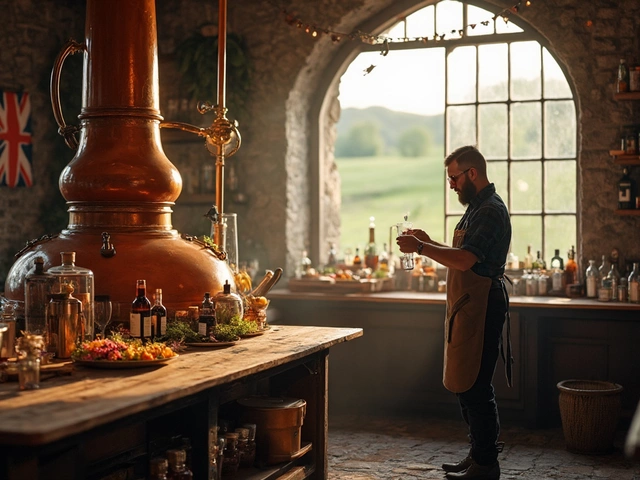Alcohol Weight Gain: Why Your Nightly Drink Might Be Adding Pounds
Ever notice that after a weekend of wine or cocktails you feel a little heavier? It's not just the hangover – the alcohol itself packs calories that turn into extra body fat. A single 5‑oz glass of wine can have about 120 calories, a pint of beer roughly 150, and mixed drinks often go well over 200. Those numbers add up fast, especially if you’re sipping multiple drinks.
Besides the obvious calories, alcohol messes with the way your body burns fuel. When you drink, your liver focuses on breaking down the alcohol first, putting the metabolism of carbs and fats on hold. That means the food you eat while drinking is more likely to be stored as fat. Add to that the fact that alcohol lowers your inhibitions, so you might reach for salty snacks or skip the workout you had planned.
Why Alcohol Adds Pounds
First, alcohol is a dense source of energy – 7 calories per gram, almost as much as fat (9 calories per gram). Those calories are called "empty" because they offer no vitamins, minerals, or protein. Second, drinking triggers the release of a hormone called insulin, which helps store fat. Third, alcohol can increase your appetite. Studies show people tend to eat more when they’ve had a few drinks, often choosing high‑fat, high‑sugar foods.
Another hidden factor is dehydration. Alcohol is a diuretic, so you lose water and feel thirsty. Your body may mistake that thirst for hunger, leading you to snack more. Plus, after a night of drinking, you might feel too tired to hit the gym, causing a drop in overall calorie burn.
Tips to Keep Weight in Check While Drinking
1. Choose lower‑calorie drinks. A clear spirit like vodka or gin mixed with soda water and a splash of lime is far lighter than a sugary cocktail. Light beers and dry wines also have fewer calories than their full‑bodied counterparts.
2. Watch your portion sizes. Stick to one standard drink – 12 oz beer, 5 oz wine, or 1.5 oz spirits – and avoid free‑pouring. Measure at home if you’re mixing at the bar.
3. Eat protein and fiber before you start drinking. A handful of nuts or a piece of chicken salad can slow the absorption of alcohol and keep you fuller longer, so you’re less likely to raid the nacho tray.
4. Stay hydrated. Alternate each alcoholic drink with a glass of water. This cuts down on total alcohol intake and helps curb the extra snacking that comes from thirst.
5. Move after you drink. A short walk or a quick body‑weight circuit can boost your metabolism and offset some of the extra calories.
Remember, you don’t have to quit alcohol to stay fit. By picking smarter drinks, controlling portions, and balancing with food and activity, you can enjoy a night out without seeing the number on the scale jump.
Next time you raise a glass, think about what’s really in it – not just the flavor, but the calories and how they affect your body. A little awareness goes a long way toward keeping your waistline as happy as your taste buds.
Exploring the link between alcohol intake and weight gain, this article delves into which alcoholic beverages are most likely to tip the scales. Whisky, beer, and sugary cocktails are examined for their calorie content and impact on body weight. By understanding the caloric makeup and consumption habits, readers can make informed decisions to balance their social drinking with maintaining a healthy weight.
View Details

